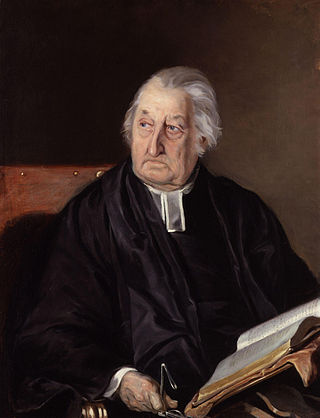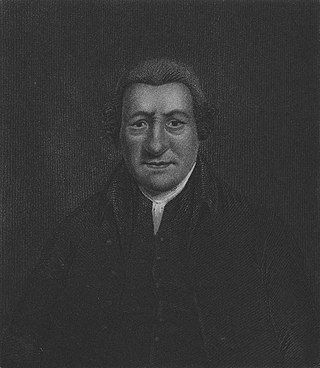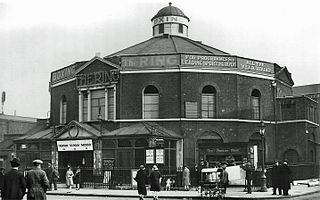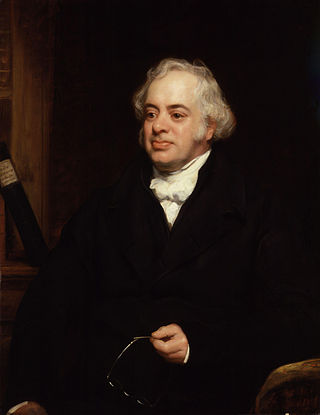This article has multiple issues. Please help improve it or discuss these issues on the talk page . (Learn how and when to remove these template messages)
|
Jeremiah Learnoult Garrett (fl. 1809) was an English dissenting minister.
This article has multiple issues. Please help improve it or discuss these issues on the talk page . (Learn how and when to remove these template messages)
|
Jeremiah Learnoult Garrett (fl. 1809) was an English dissenting minister.
Garrett was born at Horselydown, Southwark, near the Old Stairs, on 29 February 1764. His parents were boatbuilders. Before he was eight he had 'strict views of the world being burnt up, and the wicked being turned into hell.' Soon after this date his father died. He was now sent to school, first at Christ's College, Hertford, and afterwards at Jackson's Academy, Hampton. He was then set to learn the tailoring trade, but disliking it was apprenticed to a builder of ship's boats at Wapping, who ill-used him. His master absconding for debt, he was apprenticed to another in the same business.
At the age of fourteen or fifteen he had a vision of an "ancient form", which he took to be Jesus Christ. A dissenting minister was called in to see him, to whom he confessed his sins; the minister 'pointed him to the blood of Christ.' Subsequently, however, he took to vicious courses, had a man-of-war's man who had assaulted him arrested, frequented theatres, fought with his fellow-apprentice, contracted debts, and a disease for which he was treated in the London Lock Hospital. On emerging from the hospital he attended the ministrations of John Wesley's preachers, as well as the services of the church, used 'to go out into the fields, and rave hell and damnation to sinners.', and came to be called a second George Whitefield by the old women in Moorfields. A mysterious find of £80 in his bed enabled him to pay his debts.
At a somewhat later period he held forth at the old Rectifying House and the old Soap House, Islington, and in 1788 he laid the foundation-stone of the chapel since known as Islington Chapel in Church Street. He was received into Lady Huntingdon's Connexion and ordained. About this time he married. He moved to Basingstoke, then to Wallingford, Oxfordshire, and later spent some three years in Guernsey. Returning to England, he ministered for a time at Ashby-de-la-Zouch, but his views on baptism caused his ejection from Lady Huntingdon's Connexion.
Garrett went into the business of a cotton dyer at Leicester. He soon, however, resumed preaching, and, after ministering for some time at Nottingham, established himself just before 1800 at Lant Street Chapel, in the Borough, Southwark, having also a lecture at Monkwell Street Chapel, London. His views seem to have inclined to antinomianism. The date of his death is uncertain.
He published:
A plate of Garrett's head is in Southcott's 'Answer.'

Richard Watson (1781–1833) was a British Methodist theologian, a leading figure of Wesleyan Methodism in the early 19th century.

Rowland Hill A.M. was a popular English preacher, enthusiastic evangelical and an influential advocate of smallpox vaccination. He was founder and resident pastor of a wholly independent chapel, the Surrey Chapel, London; chairman of the Religious Tract Society; and a keen supporter of the British and Foreign Bible Society and the London Missionary Society. The famous instigator of penny postage, Rowland Hill, is said to have been christened 'Rowland' after him.

James Sherman, was an English Congregationalist minister. He was an abolitionist, and a popular preacher at The Castle Street Chapel in Reading from 1821 to 1836. He and his second wife Martha Sherman made a success of Surrey Chapel, Blackfriars, London from 1836−54. Martha died in 1848.

Joshua Toulmin of Taunton, England was a noted theologian and a serial Dissenting minister of Presbyterian (1761–1764), Baptist (1765–1803), and then Unitarian (1804–1815) congregations. Toulmin's sympathy for both the American (1775–1783) and French (1787–1799) revolutions led the Englishman to be associated with the United States and gained the prolific historian the reputation of a religious radical.

Selina Hastings, Countess of Huntingdon was an English Christian and religious leader who played a prominent part in the religious revival of the 18th century and the Methodist movement in England and Wales. She founded an evangelical branch in England and Sierra Leone, known as the Countess of Huntingdon's Connexion.

The Surrey Chapel (1783–1881) was an independent Methodist and Congregational church established in Blackfriars Road, Southwark, London on 8 June 1783 by the Rev. Rowland Hill. His work was continued in 1833 by the Congregational pastor Rev. James Sherman, and in 1854 by Rev. Newman Hall. The chapel's design attracted great interest, being circular in plan with a domed roof. When built it was set in open fields, but within a few years it became a new industrial area with a vast population characterised by great poverty amidst pockets of wealth. Recently the site itself has been redeveloped as an office block, and Southwark Underground Station has been built opposite.
James Foster was an English Baptist minister.
Hugh Farmer was an English Dissenter and theologian.

Joseph Towers was an English Dissenter and biographer.

William Aldridge was an English nonconformist minister.
John Bradford (1750–1805) was an English dissenting minister.
Jehoiada Brewer (1752?–1817) was a Welsh dissenting minister. Refused ordination to the Church of England, he was known as a preacher, and hymn writer.
John Ward, known as Zion Ward, was an Irish preacher, mystic and self-styled prophet, active in England from around 1828 to 1835. He was one of those claiming to be the successor of prophetess Joanna Southcott after her death. His imprisonment for blasphemy prompted the intervention of Member of Parliament Joseph Hume.

John Eyre was an English evangelical clergyman. He helped in establishing some of the major national evangelical institutions.

Thomas Haweis (c.1734–1820), was born in Redruth, Cornwall, on 1 January 1734, where he was baptised on 20 February 1734. As a Church of England cleric he was one of the leading figures of the 18th century evangelical revival and a key figure in the histories of the Countess of Huntingdon's Connexion, the Free Church of England and the London Missionary Society.

John Kentish was an English Unitarian minister.

Thomas Wills (1740–1802) was an English evangelical preacher, a priest of the Church of England who became a Dissenter.

Obadiah Hughes (1695–1751) was an English Presbyterian minister.

Edward Parsons (1762–1833) was an English Congregational minister and writer.
![]() This article incorporates text from a publication now in the public domain : "Garrett, Jeremiah Learnoult". Dictionary of National Biography . London: Smith, Elder & Co. 1885–1900.
This article incorporates text from a publication now in the public domain : "Garrett, Jeremiah Learnoult". Dictionary of National Biography . London: Smith, Elder & Co. 1885–1900.